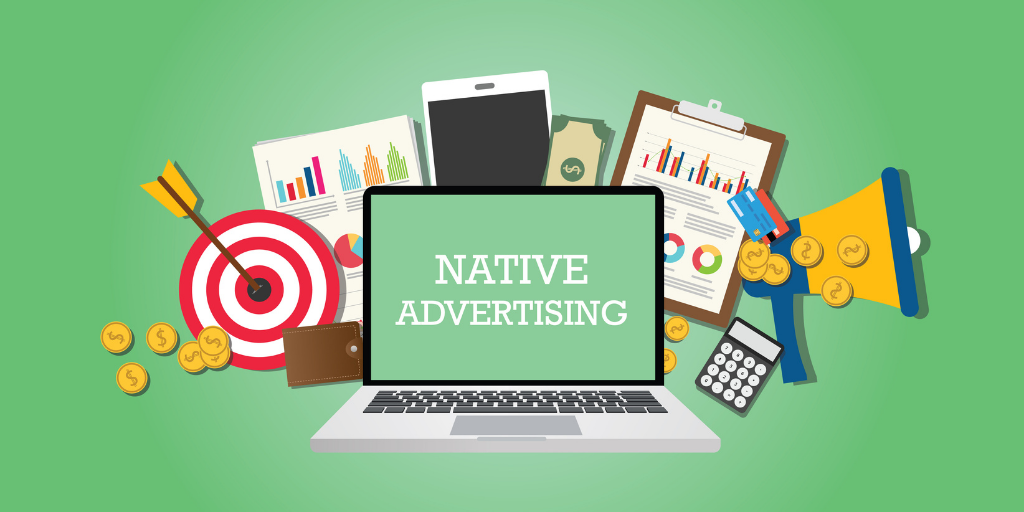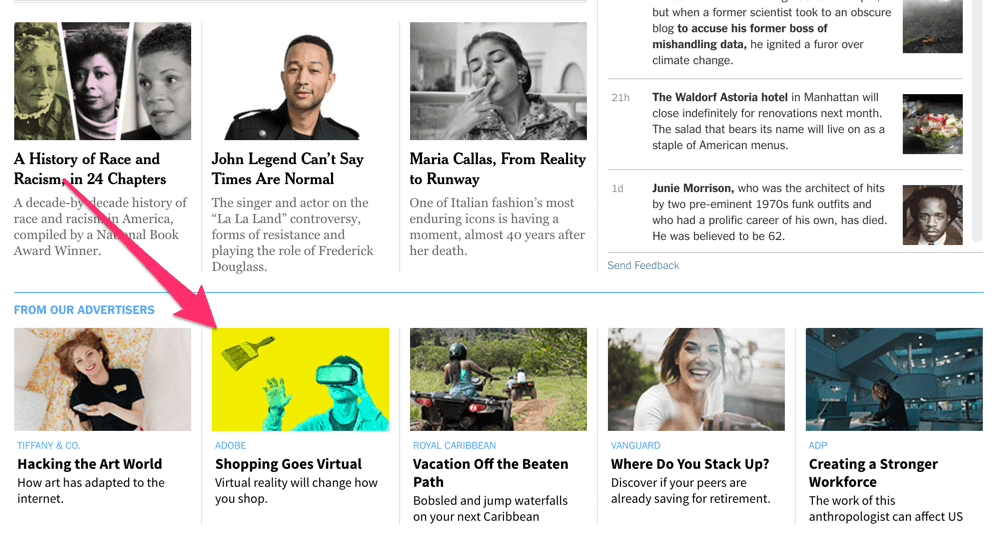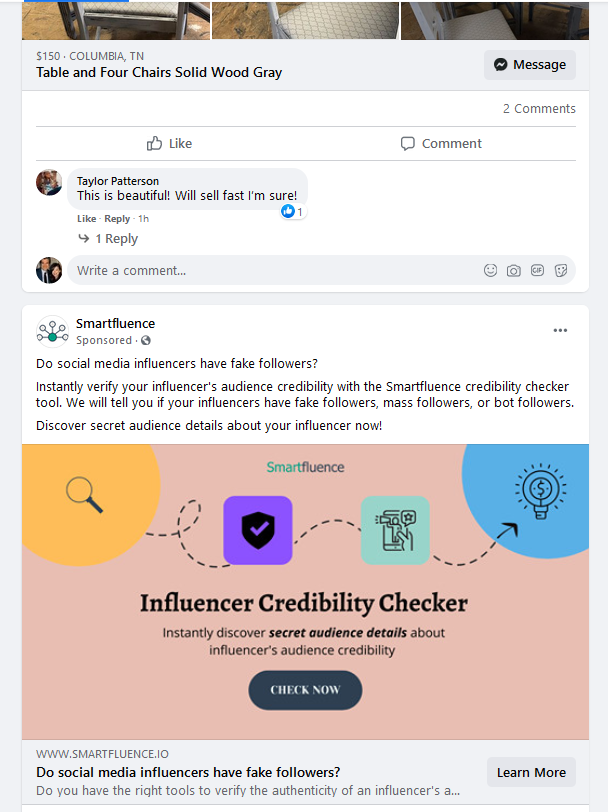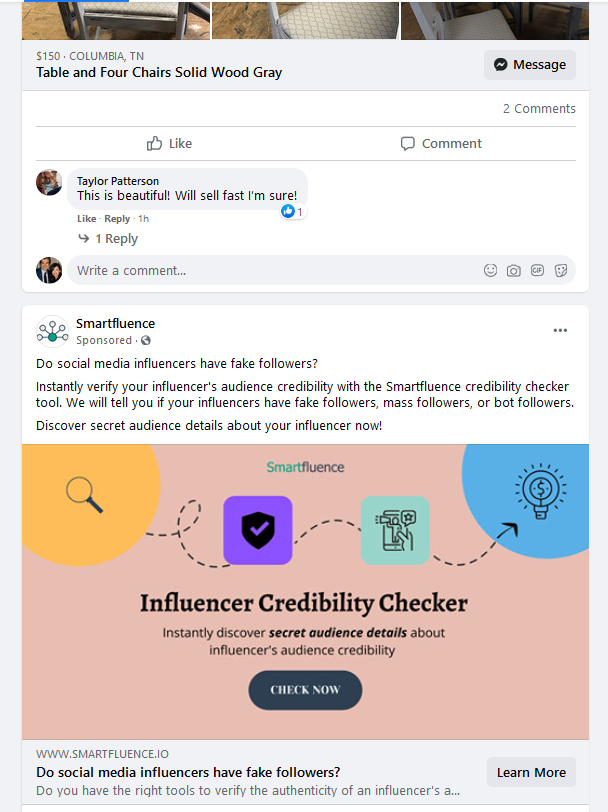
A Guide to Native Advertising – Part 1: What Is Native Advertising?
Are you wondering, “What is native advertising?” Then you’ve come to the right place. We’re going to take a deep dive into this tactic and explore why it’s worth using.
What if you could camouflage your ads to look exactly like the page on which you publish them? You may be thinking this is a recipe for ad disaster. Why would you want your ads to blend into the background, so they don’t stand out? Well, because ad blindness and fatigue are alive and well, and when consumers recognize an ad, they are less likely to click on it.
Due to consumer ad blindness and resistance to traditional ad formats, businesses are moving toward more non-disruptive ad formats that attract consumers, not deter them from clicking.
One type of nondisruptive advertisement is called native advertising, an effective ad format that helps businesses more strategically publish ads without irritating consumers. In this multipart series we’ve labeled “Native Advertising 101,” we’ll answer the following questions:
- What is native advertising?
- How does it benefit your business?
- Why can it sometimes be controversial?
- How can you leverage it to increase brand awareness and sales?
What Is Native Advertising?
Native advertisements mimic the aesthetics of the page on which they are published. They align with the publication’s style, tone, and design and act similarly to the platform.
Essentially, native ads blend into the page, making it difficult to distinguish the ad from the native platform.
As mentioned before, native ads address the growing problem of consumer ad fatigue and allow publishers to better serve their target audience’s needs with relevant and interesting content. As a result, 41% of brands use native advertising as part of more expansive promotional campaigns.
What Does a Native Ad Look Like?
You’ve likely seen a native ad without even realizing it. They are especially popular on social platforms and media platforms.

Facebook also publishes advertisements that look like traditional posts. Aside from the “Sponsored” tag, the posts look like they are from one of your Facebook connections.


Because native ads look like organic content published by the publication, they do not tire out consumers, making them more apt to click.
Are Native Ads Acceptable to Use? The Growing Controversy
Native ads seem like an excellent way to increase ad conversions and ROI. But there’s a catch. There’s been a lot of controversy around native advertising and wavering views on its usage.
Imagine this scenario: You’re an editor at a large media outlet and publish sponsored content from Merrill Lynch. So, you receive money from Merrill Lynch to publish a story on the company. Now, let’s say that Merrill Lynch is involved in some sort of controversy or newsworthy predicament. Do you publish a story about the company? Can you objectively publish a story on Merrill Lynch after there was a money exchange? Are all proceeding stories about Merrill Lynch published with money exchanges, or are they objective?
You can see what kind of ethical questions can arise from native advertising.
The other problem is that consumers may not know that the advertisements are ads because they look so much like the publication.
Due to these issues, the Federal Trade Commission has stepped in and addressed native advertising. In its documentation, the FTC states:
“When a native ad appears on the main page of a publisher site or is republished in other media, it commonly consists of a headline, often combined with a thumbnail image and a short description, which, if clicked or tapped, leads to additional advertising content. Under FTC law, advertisers cannot use ‘deceptive door openers’ to induce consumers to view advertising content. Thus, advertisers are responsible for ensuring that native ads are identifiable as advertising before consumers arrive at the main advertising page. In addition, no matter how consumers arrive at advertising content, it must not mislead them about its commercial nature.”
In other words, if the advertisement looks too much like the publication and the consumer will not be able to distinguish whether or not it is an ad, the outlet must adequately disclose that the content is sponsored or an ad. The FTC offers examples here if you want to get a better idea of how it makes a distinction between native ads that require disclosure and those that do not.
So, are native ads okay to use? Yes! As long as you use the proper disclosure (you label your ad as sponsored, etc.), you are safe to use them.
In fact, an experiment at Stanford University found that consumers know exactly when they are viewing a native ad—they are not fooled. But they will still click on the ad if they find it valuable.
Native Ads Are Still Superior
Even amid the ongoing controversy, native advertising still reigns supreme over traditional methods.
- Native digital display ad spend in the U.S. more than tripled from 2016 to 2020, going from $16.68 billion to $52.75 billion.
- Native ads receive 53% more views than traditional display ads.
- Native ads registered an 18% higher lift in purchase intent and 9% lift for brand affinity responses than banner ads
The benefits of native ads for brands are numerous, as you can see. But, there’s more. Let’s briefly discuss a few…
Increased brand awareness
One way to increase brand awareness is to publish educational, problem-solving content that does not sell but introduces consumers to your brand.
Before native advertising became popular, brands could only post this type of awareness content on their own blogs, prolonging their time to build an audience. With native advertising, you can publish content on major media outlets as an advertisement and build brand awareness quicker. Also, consumers willingly share this type of published content because it looks like articles, so content virality is another potential benefit.
Nondisruptive advertising
As mentioned earlier, ad blindness and fatigue have pervaded consumerism, and today’s shopper is not as receptive to blatant, in-your-face ads. Consumers don’t want to be interrupted as they browse.
Native ads are not intrusive as they do not interrupt the user’s browsing experience.
Even though native advertising is nondisruptive, the key to successful campaigns is to supply the audience with relevant and interesting content that provides a lot of value. This is especially important with media publications that publish sponsored articles and stories that look like editorial content.
Greater trust-building opportunity
Because consumers more widely accept native advertising content, it does a better job of building trust with a brand than traditional advertisements.
Imagine a new tech brand pays to get an article published on TechCrunch, an established, reputable tech outlet. The brand’s reputation skyrockets immediately even though the content is sponsored because it looks credible and offers a lot of value (make sure it is high-value content).
What Is Native Advertising? What You Need to Know…
In this article, we just scratched the surface of what native advertising is and how it can benefit your business. In future articles, we will dive deeper into implementing native ads to boost ROI and build your brand.
If you’d like some dedicated assistance with native advertising, we’d be happy to help. Contact us here for a free consultation and learn more about how we help our clients build ROI-boosting marketing campaigns based on proven methods.

